When you're Gabriel Held, every day is #TBT. The vintage curator for VFiles and self-styled cultural commentator's Instagram is full of colorful, irreverent pop culture gems from the '90s and early '00s, the era that birthed the first Supermodels, Destiny's Child, Ru Paul, and Lil' Kim. "I started taking photos and printing when I was 11," Held told FADER over the phone from New York, where he lives. "Around that same time, I started carrying around an empty backgammon case as a briefcase with magazine clippings in it, almost like a very primitive Instagram." Now, in 2015, that backgammon case has evolved into a feed with more than 11K loyal followers. Held's Instagram is where you go when you want to see screenshots from old Mariah Carey interviews, Naomi Campbell at the top of her game, and throwback ephemera you never even knew existed.
Held has a particular affinity for a certain aesthetic he calls "trashionista." According to him, trashionista thrived in the Mariah Carey Glitter era and the Dirty phase of Xtina's career. The typical trashionista, Held says, "gets off on bucking authority in terms of what is good taste. She likes to be defiant," he adds, "but she mostly just likes to do whatever she wants." Since he has a deep personal attachment to the celebrities whose images he posts (he credits Lil' Kim with helping him find himself), we asked Held to talk us through some of the most iconic diva imagery ever. Below, he offers cultural and stylistic context, a bit of academic analysis, and just a little shade.
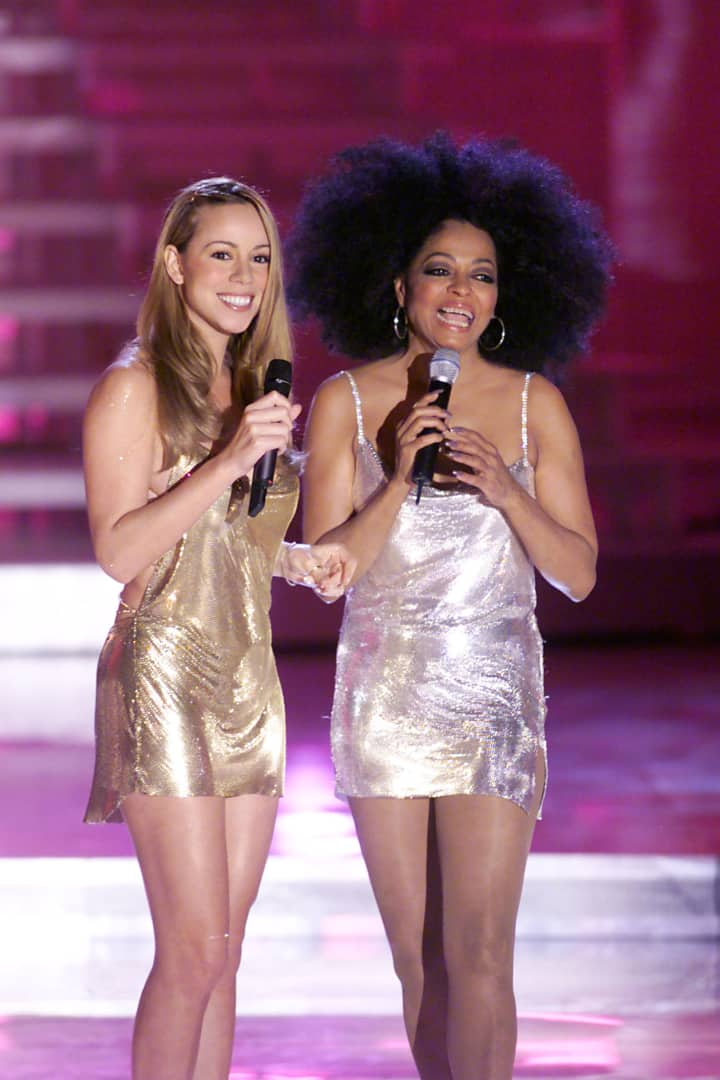 Frank Micelotta / Getty Images
Frank Micelotta / Getty Images
Gabriel Held: "I can't help but wonder whose idea this was. I'm inclined to say Diana's. I can see her saying, 'Look, I can keep up with the young bucks who are here to pay me tribute.' There's always an implied rivalry when two women wear the same dress to the same event, but these twin youthful Versace mesh metal dresses were purposeful. It does not play out quite as well as when Mariah and Whitney did it at the VMAs, though, where they wore the same Vera Wang dress and they both tore away, to the crowd's delight, into different variations on the same dress. Now that was campy and trashionista."
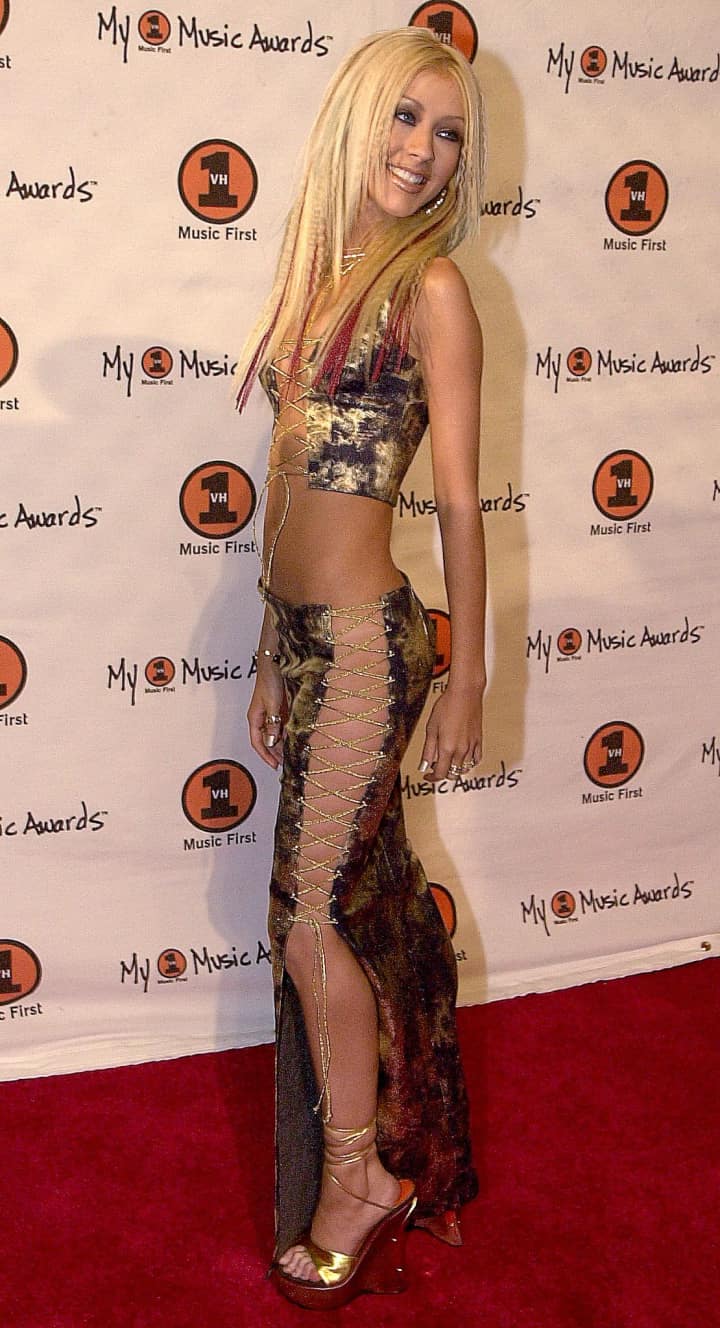 Lucy Nicholson / Getty Images
Lucy Nicholson / Getty Images
Gabriel Held: "The essence of this look to me is collage. Let's start with the hair: the color is one seldom found in nature but often found in the wig shop; it's known as the 613. The mixture of synthetic colors and textures is referential of its own artificiality, and that's pretty post-modern. There's something interesting about the denim ensemble with its gold leaf effect and the way a common material is covered with something that signifies affluence. It's distressed and deconstructed to reveal the denim below, and it's that desire to reveal the denim within that makes this Trashionista, not just trashy."
Gabriel Held: "In this image, the two are paradoxically trying to establish themselves as solo entities by duet-ing. But what really speaks to me about this image is that it uses literal trash, tabloids—which I suppose are metaphorical trash as well—as the wardrobe. But what's extra trashionista about this look is that the tabloids aren't even manipulated physically. They're basically just wrapped around, like, 'I don't give a fuck what tabloids say.'"
 Brenda Chase / Getty Images
Brenda Chase / Getty Images
Gabriel Held: "There is a whole mess of cultural appropriation going on here, but that's quintessentially Gwen Stefani. She is a mash-up. The most obvious cultural appropriation here are the bindis, which—rather cleverly—mirror the studs on the bikini top. What I think is beautiful about this look is that by pulling all these disparate cultural references she's created something entirely new. It's very artful to me."
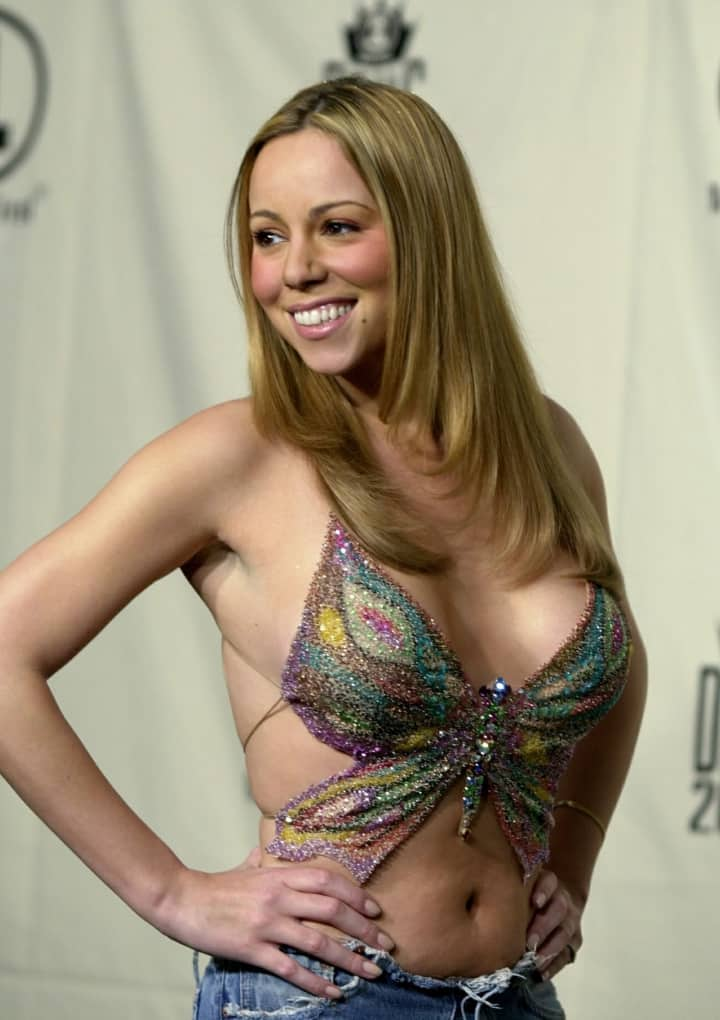 Stan Honda / Getty Images
Stan Honda / Getty Images
Gabriel Held: "There's something extremely trashionista about wearing distressed jeans to a "diva" event—as if to say "I am such a diva, I don't even need to show it !" It was years ahead of its time. The butterfly top makes the look bizarrely accessible; I remember seeing those on Canal Street at the time."
 Frank Micelotta / Getty Images
Frank Micelotta / Getty Images
Gabriel Held: "This was the moment in which J. Lo was born, essentially. She was making the transition from actress to musician and making a lot of moves to legitimize herself as "Jenny from the Block." She was dating Diddy at the time, and this look basically says to me: property of Diddy. She is literally branded across the bosom in faux diamonds that say "Sean Jean." I remember coveting this look at the time, but even her tank top was expensive, so it never really struck me as that accessible. Sometimes, in trying to show what you know—like what's hot in the streets—you actually end up showing what you don't know. That being said, I love this look. It's iconic."
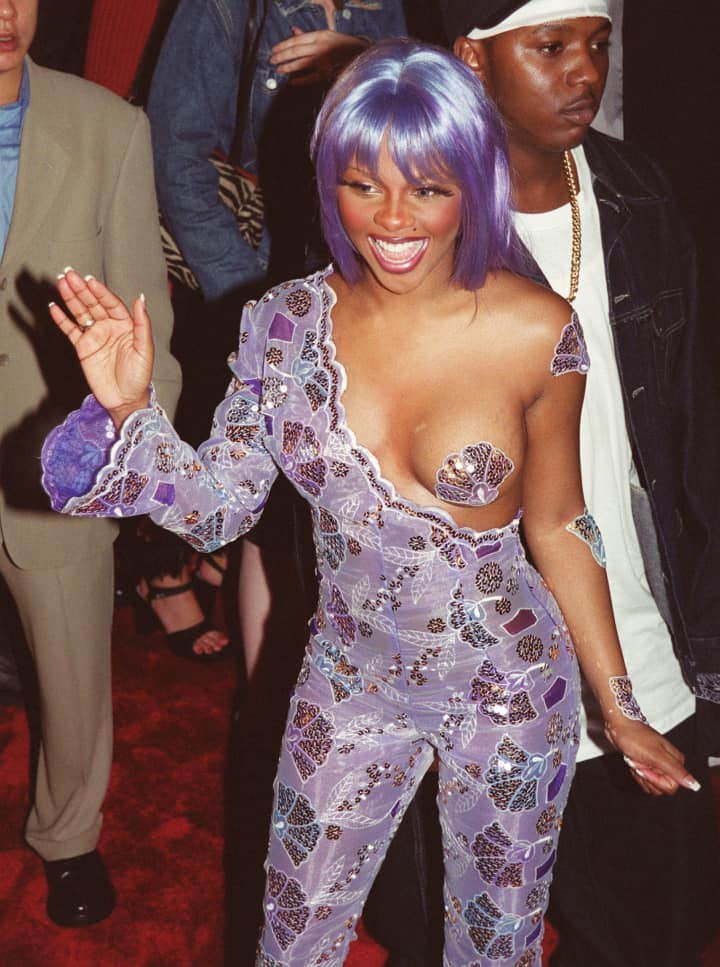 Henny Ray Abrams / Getty Images
Henny Ray Abrams / Getty Images
Gabriel Held: "Buckle your seat belt because I happen to know a lot about this look. It was designed by legendary hip-hop stylist and first lady of Bad Boy Records, Misa Hylton, who is responsible for many of Lil' Kim's iconic looks. The origin story for this look embodies the collaborative nature of music at the time, which is something I think is somewhat lacking these days. [As the legend goes], Misa and Missy Elliot were sitting around talking about what Kim should wear to the VMAs and Missy said, "You know what would be hot? If she just came out with one tit out." And thus, it was born.
What I love about this look is the monochromatic aspect. Matching the wig to the outfit was light years ahead of the curve, as was celebrating the artificiality of her hair and her image. The application of pasties—not only on the nipple, but elsewhere on the body—shows how Kim and Misa used her body as a canvas for creative expression. This look has been on every all time worst dress list but 15+ years later we're still talking about; Miley Cyrus is dressing up as it for Halloween. So, regardless of whether it was good taste or not, it made a lasting impact on culture. It also created a moment of television history: when Diana Ross booped her on the boob."
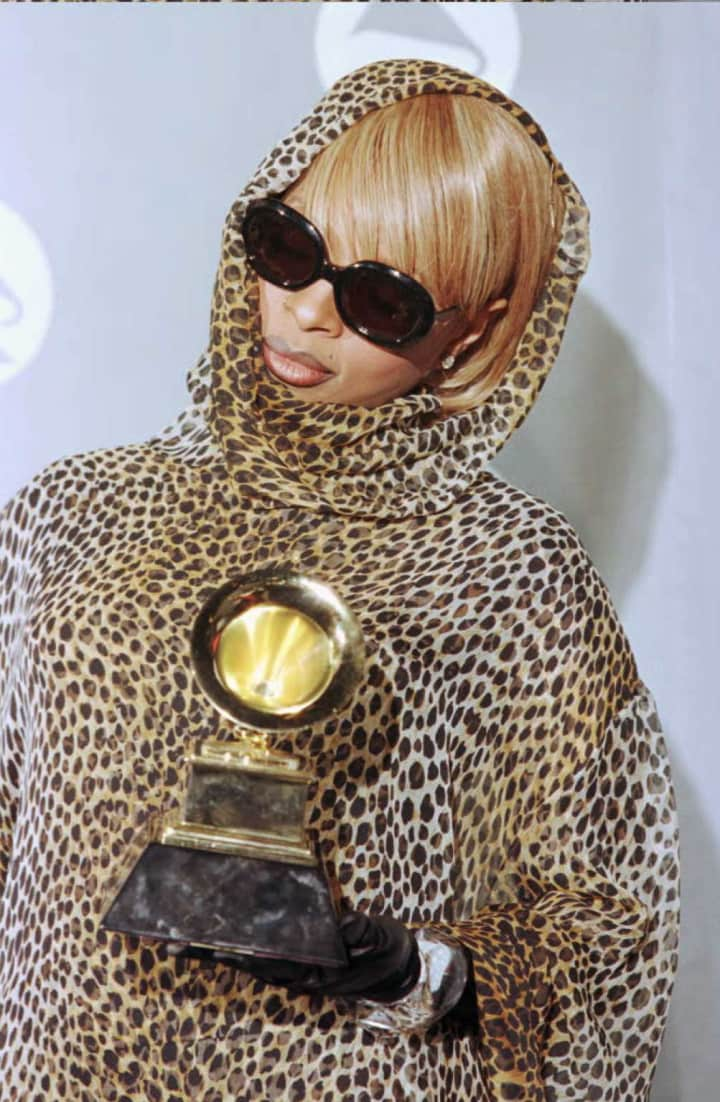 Jeff Haynes / Getty Images
Jeff Haynes / Getty Images
Gabriel Held: "What Misa did for Mary—as well as many of the other acts on Bad Boy Records—was to actually invert what was common style for R&B singers of the time. She had Mary out in a B-girl look. Think of the "Real Love" video, with the ponytails through the baseball caps and the sports bras under the baseball jerseys and the combat boots. The look was really reflected more of Mary's sound and personality. But here, dressed in a look that's very '60s inspired, she was also able to grow into a more glamorous incarnation of that. This look is perhaps the meeting point at which ghetto fabulousness and fabulousness just became the same thing."